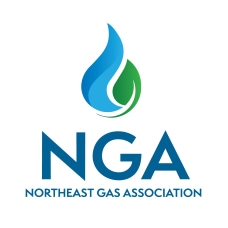PSMS Lessons Learned - Situational Awareness - June 2025
June 2025 PSMS Lessons Learned
Good Situational Awareness leads to a Good Catch!!
Conducting “Pre-Mobilization Reviews” (PMR) can act as an additional layer of protection and assist with identifying potential hazards and mitigate risks. The purpose of the PMR is to ensure that responsible personnel review, and understand the work package, as designed before and during, its assignment to field personnel. More information on PMRs can be found in the Mains Services Construction PSMS Tactical Guide and Quick Tips.

Description of Event:
A main replacement project included installation of a new steel gas main and outlet valve downstream of a Regulator Station. The Station was out of service for the duration of the work, however, was placed back in service following a scheduled Performance Test (PT). Fortunately, the I&R Supervisor recognized that a control line from the Station remained connected to the main that was to be retired, and took the station back out of service as a precaution the following day. Had the station been left in service and the existing main been retired before transferring the control line to the new main, an over-pressurization event could have occurred.
Key Causal Factors/Root Causes:
- Control Line transfer was not identified in distribution design.
- SOP review cycle was completed (Approved) without identifying the control line was included in the scope of work.
- MOC - discontinuity in design/approval/execution of construction & in-service process
Key Corrective Actions:
- Hold initial training with Standard Engineering / PRE / I&R to review critical Policies & Standards relevant to their engineering functions. (ECDP training will be required and includes training on Reg. Station design)
- Update Engineer / Writer Checklist to highlight critical functions, including control line Identification.
- Create a process for Standard Engineering to discuss work w/n 200' of Reg. Stations with PRE and I&R during project design phase. Incorporate PRE MOC into the project design as applicable.
- Verify up-to-date and accurate station prints are available for our Regulator Stations.
- Establish a timeline to complete Regional Control line mapping by the end of 2028.
- Establish a process with mapping to ensure Regulator Station prints are updated with as-builts in a timely manner when changes to the station are made.
- Update the SOP Policy, including requirement of attaching flow diagram and engineering checklist to SOP in policy. Also require step for control line transfers prior to abandonment in the policy
- Develop recurring (annual) SOP review training for I&R Supervisors.
- Conduct annual refresher training for GSO Coordinators to review SOP Approval requirements and Lessons Learned. Update training guide to include a required step for control line transfers prior to abandonment.
- Include within the Regulator Return to Service step, to confirm if control lines were transferred. Confirm if a blowdown and recovery was performed on the control line.
- Update SOP application to have a control line confirmation transfer check-off box to be included during SOP submittal.
- Communicate with relevant organizations the requirement for the MOC Process to be utilized whenever PRE assets are impacted.
- Develop process to review SOPs approved by a departing I&R Supervisor.
Key Lessons Learned:
- It’s critical to take time to pause and assess processes in place to evaluate their effectiveness and potential associated risks. Possessing a continuous improvement mindset is critical to safeguarding our gas infrastructure.
- Establishing processes to turnover critical information from employees changing positions, retiring, or company departures is important to enable a successful transition.
- It is important to be clear, concise, and intentional when writing procedures. Ensure the instructions and intentions of the procedure are well defined to avoid ambiguity.
- When abnormal operating conditions (AOC’s) are encountered in the field, ensure communication channels are established to make all parties aware of the condition and risks.

